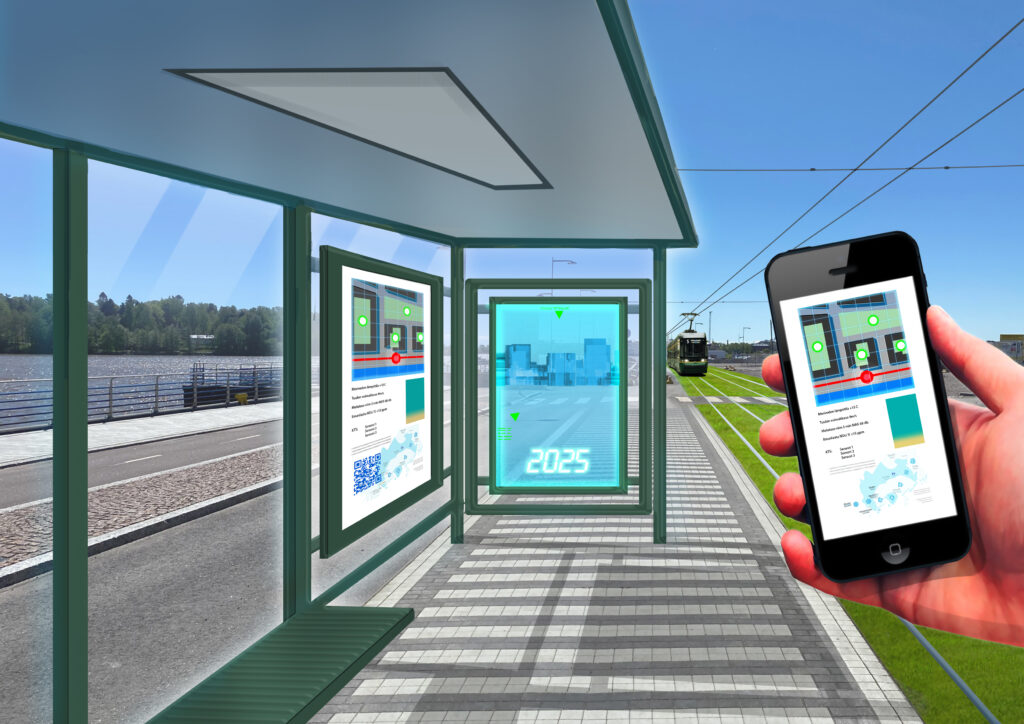Smart and Clean Tram Stop

Introduction
In the Smart and Clean Tram Stop concept, the tram stop works as a hyperlocal hub for distributing green infrastructure-related information linked to the local area of the tram stop on a screen integrated into the structure of the stop. The goal is to use the tram stop to promote highly local green infrastructure solutions for citizens and to encourage people to benefit from greenery-related solutions. Creating a digital information board on the progress of local greenery initiatives that changes over time means that passengers can be offered small pieces of information while waiting for public transport. Citizens can take the information with them on their mobile devices if they find the subject of interest.
The information can be accessed to take away by scanning a QR-code once the tram has come to a stop. The screen also works as an “augmented reality window” that allows the user to look forward in time to when local greenery has grown to maturity. The Smart and Clean Tram stop website also functions as a mobile device augmented reality (AR) experience, separate from the AR function that only works at the tram stop screen.
Description of practice
Process
The function of the tram stop was developed in discussions in the Virium Helsinki Forum project team, with the specific needs and functionalities of the southern Kalasatama area in mind.
Who was involved
The concept was created by two B.Green project members from the Virum Helsinki Forum. Visualisations of the concept were developed with a professional illustrator.
Promotion and communication
The concept was promoted in B.Green project-related communications.
Time commitment
The Smart and Clean Tram stop concept was created in 6 months in the spring and summer of 2021.
| Level of participation |
|
| Urban planning challenge(s) tackled | Governance and institutional factors
Stakeholder engagement
Knowledge and skills
|
Lessons learned
● Additional hardware is difficult to integrate into functioning tram stops. Using existing screens and structures would facilitate realisation.
● The tram stop screen must provide a quick and easily usable service since the time spent at the stop is short.
Outcomes
● The concept can be realized using existing technology with a reasonable level of resources but the quality of the experience would benefit from good quality 3D-city models and digital twins.







